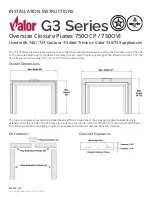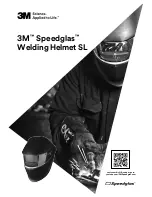
|
30
CRYSTAL® BATTERY USER MANUAL
4.3 BATTERY
INSTALLATION
BEFORE INSTALLATION READ THIS SECTION
THOROUGHLY. TO ENSURE CORRECT INSTALLATION
ACCORDING TO REQUIRED APPLICATION AND
EQUIPMENT SETTINGS
Prior to Installation:
Ensure that the batteries remain in the shipping pack-
aging until it arrives on the installation site. After the
batteries are unpacked, check for any visible damage
to the product. Batteries should be handled with great
care during transportation and installation to avoid
risk of electrical shock, high voltage, short-circuit and
reverse connection.
You are dealing with a live battery.
Electrically insulated equipment and clothing should
be used when working with or connecting batteries.
DO NOT lift any cell by the terminal posts as this
will void the warranty. Always lift the batteries by the
supplied handles or from the bottom of the batteries,
in the event that the battery is not designed or
supplied with the required lifting handles.
WARNING: Please note that the batteries need
to be lifted evenly as the handles are not designed to
carry the full weight of the battery on a single handle
DO NOT attempt to remove the pressure relief
valves or vent covers as this will void the warranty.
Attempted removal may also damage the vent and
prevent proper functioning of the battery.
When there are multiple batteries connected together
in a group (series or parallel), ensure that the voltage
of the batteries in the group match prior to connecting.
Before connecting the equipment to the batteries, use
a piece of fine grit sandpaper to sand the contact area
of the terminal and the connecting lug. This will
ensure good contact between battery and lug and
reduce the risk of oxidation.
Before connecting the load, charge the batteries to a
state of full charge to ensure all the batteries are on
the same level.
Batteries should be installed away from direct sunlight,
heat sources (1 meter and above), organic solvents,
corrosive gas and locations where sparks may occur,
such as transformers, power switch and fuses.
At this
point it is safe to connect the batteries.
Installation and Connection
• Wrap metal installation tools (such as wrenches)
with insulating tape, to create insulation.
• Ensure that all heating and cooling ducts are
directed away from the batteries. The installation
site should be kept clean, dry and well ventilated,
at all times.
• To prevent a temperature rise of the batteries
when used in the equipment, the batteries should
preferably be stored at the lowest section of the
equipment. In addition, avoid contact between the
batteries and with the inner walls of the machine.
• First establish connection between the batteries,
then connect the battery pack with a charger or
with connections loading.
• Smudgy, oily and loosely connected connections
could cause contact problems and lead to faults
on the equipment. Ensure that all contacts are
clean from oil and grease and that all
connections are securely fastened.
• Terminals should be torqued to individual battery
specifications, but not exceed 10 N.m. Excessive
tightening will cause damage to the thread on or
inside the battery terminal. Terminal connections
should be checked periodically during the life
of the battery to ensure that there are no loose
connections.
Table 5 Torque Settings of Crystal® batteries.
• When making parallel connections with multiple
batteries, connect the batteries in series first and
then in parallel. To ensure good heat distribut-
ing conditions, maintain 10mm or more space
between batteries; and 35mm and above space
between each row and column of battery series;
• Ensure that the batteries are connected in the
correct way. Ensure that reverse polarity is
eliminated by connecting positive to positive
and negative to negative on the equipment. Also
ensure that the correct size of wire diameter is
used according to current drawn requirement. If
incorrect wires are used, it will heat rapidly and
cause damage to both the battery and the
equipment that it is connected to.
• After connection, coat the battery terminal with
anti-rust coating;
• When the battery is installed in place, check
that the total voltage measuring system and the
positive and negative polarity of the battery is
connected correctly. Load charge only when
connections are verified.
• To achieve optimum battery life, please use qual-
ity automatic current limiting voltage charging
equipment that has overvoltage, under voltage,
overcurrent protection devices and alert settings.
Equipment charge should reach regulation accu-
racy ± 1%, ripple ≤ 1%, steady flow accuracy ≤ 1%.
TERMINAL
M5 (F5)
-2.5Nm
3.8 - 5.4Nm
7.8 - 9.8Nm
M6 (F3)
M8 (F4)
TORQUE








































